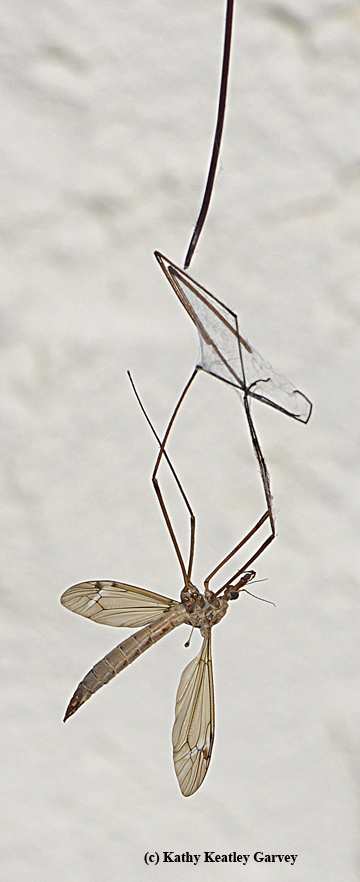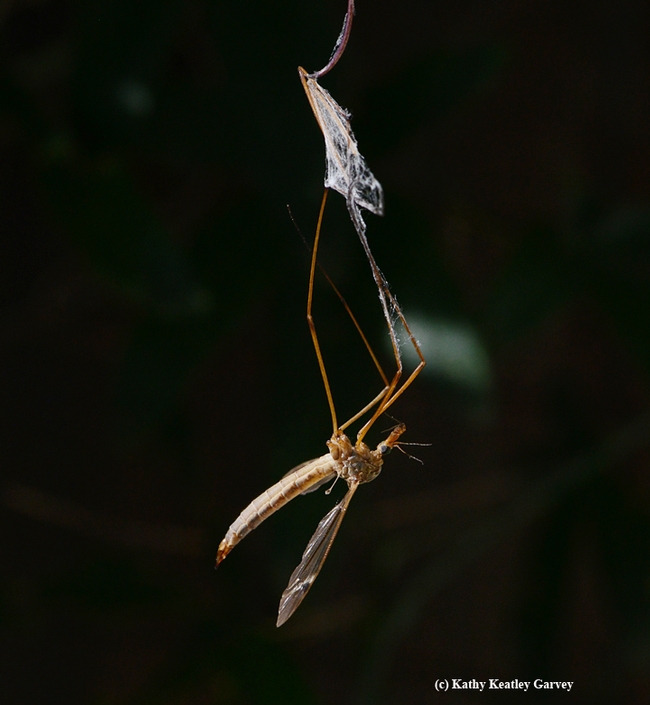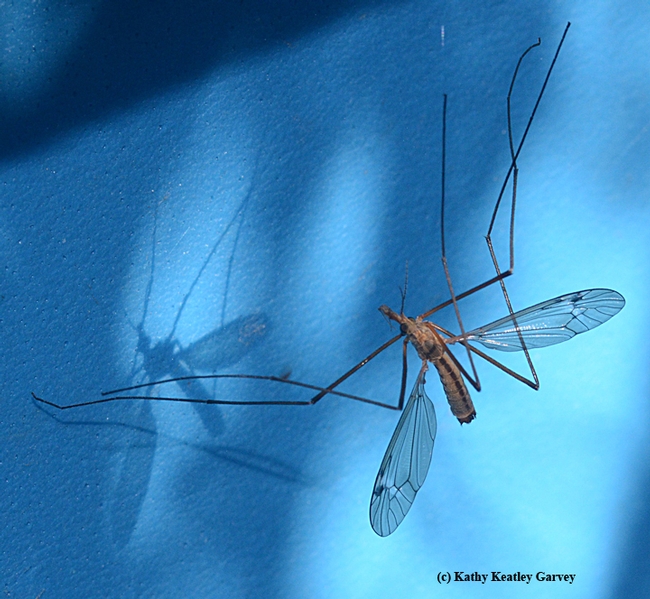
They're everywhere. They're zigzagging around your yard, bumping into walls and windows, landing on your screen door and fence, and clustering on your porch lights, all the while searching for mates. They're in your garden, home and garage. They're in your office. They're in your car. They're everywhere.
There are tons of these spring insects this year. Why so many?
"Perhaps because of the previous years of drought, followed by good rainfall this winter, we have had a remarkable emergence of crane flies in the Central Valley, with unusually large numbers emerging over the past month or so," says Lynn Kimsey, director of the Bohart Museum of Entomology and professor of entomology at UC Davis.
Writing in the current edition of the Bohart Museum Society newsletter, Kimsey says that they're often falsely called mosquito hawks or mosquito eaters, but they don't eat mosquitoes. "In fact, adult crane flies generally don't eat at all," she points out. "Their entire brief adult lives are spent searching for mates and laying eggs."
With their long, stilt-like legs dangling, they look goofy when they fly. In fact, they're nicknamed "daddy long legs." They're not to be confused with arachnids; crane flies are members of the family Tipulidae of the order Diptera (flies).
Crane fly larvae, known commonly as leatherjackets, eat algae, microflora, and living or decomposing plant matter. Who knows--as larvae they may also scoop up a few mosquito eggs if they're in their habitat.
Adults are short lived and "generally live only a few days," Kimsey says.
Yes, and some of them may live only a matter of hours or minutes--especially when they're snared in a spider web.
Attached Images:

